
Bluetooth: 5.3
Codecs: SBC, AAC, LDAC, LC3
Noise cancelling? Yes
Battery Life: 30 hours
Finishes: x 3 (black, blue, silver)
Weight: 254g
Exceptional all-rounders that have honoured the XM series legacy while bringing in some much-desired improvements, the WH-1000XM6 help to set the standard for wireless headphones at this level.
For
- Exceptional levels of detail
- Greater sense of dynamism than Px7 S3
- More spacious, musical sound
- ANC is clearly better than B&W rivals
Against
- No aptX HD support
- Don't feel as premium as the Px7 S3
- No audio via USB-C
Bluetooth: 5.3
Codecs: SBC, AAC, aptX HD, aptX Classic, aptX Lossless, aptX Adaptive
Noise cancelling? Yes
Battery Life: 30 hours
Finishes: x 3 (black, blue, white)
Weight: 300g
B&W's latest headphones are a stellar offering, with outstanding build quality supported by superb sound and a future-proofed feature set. A very attractive pair of over-ears.
For
- Full-bodied sonic character
- Impressive levels of textural insight
- Arguably greater perceived value than XM6
- Offer USB-C 24-bit/96kHz hi-res audio
Against
- XM6 arguably sound more entertaining
- Unlike the XM6, don’t fold away
- Not all features are available straight away
- ANC quality isn't up to standards
Former England keeper Paul Robinson described the 2025 Europa League final between Tottenham Hotspur and Manchester United as like watching "a load of kids at lunchtime at school running around after a tennis ball".
It was not a classic for the ages, with the leadup to the game seeing both sides struggling in the domestic league but somehow attaining the chance for European glory.
This head-to-head, however, is something altogether different. No one can argue that the Sony WH-1000XM6 and the Bowers & Wilkins Px7 S3 aren't outstanding candidates, and few would contend that they don't deserve to be held in the highest regard as some of the best wireless headphones currently available.
This is the clash many have been waiting for. The Px7 S3 stormed onto our list of the best wireless cans when they arrived earlier in the year, whereas the Sony WH-1000XM6 were quite possibly the most anticipated over-ears of the past few years.
Europa League tie? Nope, this is the Champions League final, and it simply doesn't get bigger than this.
Sony WH-1000XM6 vs Bowers & Wilkins Px7 S3: price

Costing £399 / €429 / $449 / AU$699, the Bowers & Wilkins Px7 S3 are certainly what we would describe as a premium pair of headphones, heading off competition from the likes of Bose, Apple and, of course, Sony's latest over-ears.
The flagship Sony WH-1000XM6 cost almost exactly the same across the regions, clocking in at £400 / €450 / $449 / AU$699.
While those figures pretty much match B&W step for step, it is an increase over the brand's previous flagship cans, the WH-1000XM5, which we originally tested at £380 / €420 / $399 / AU$550.
**Winner: Draw*
Sony WH-1000XM6 vs Bowers & Wilkins Px7 S3: comfort and build
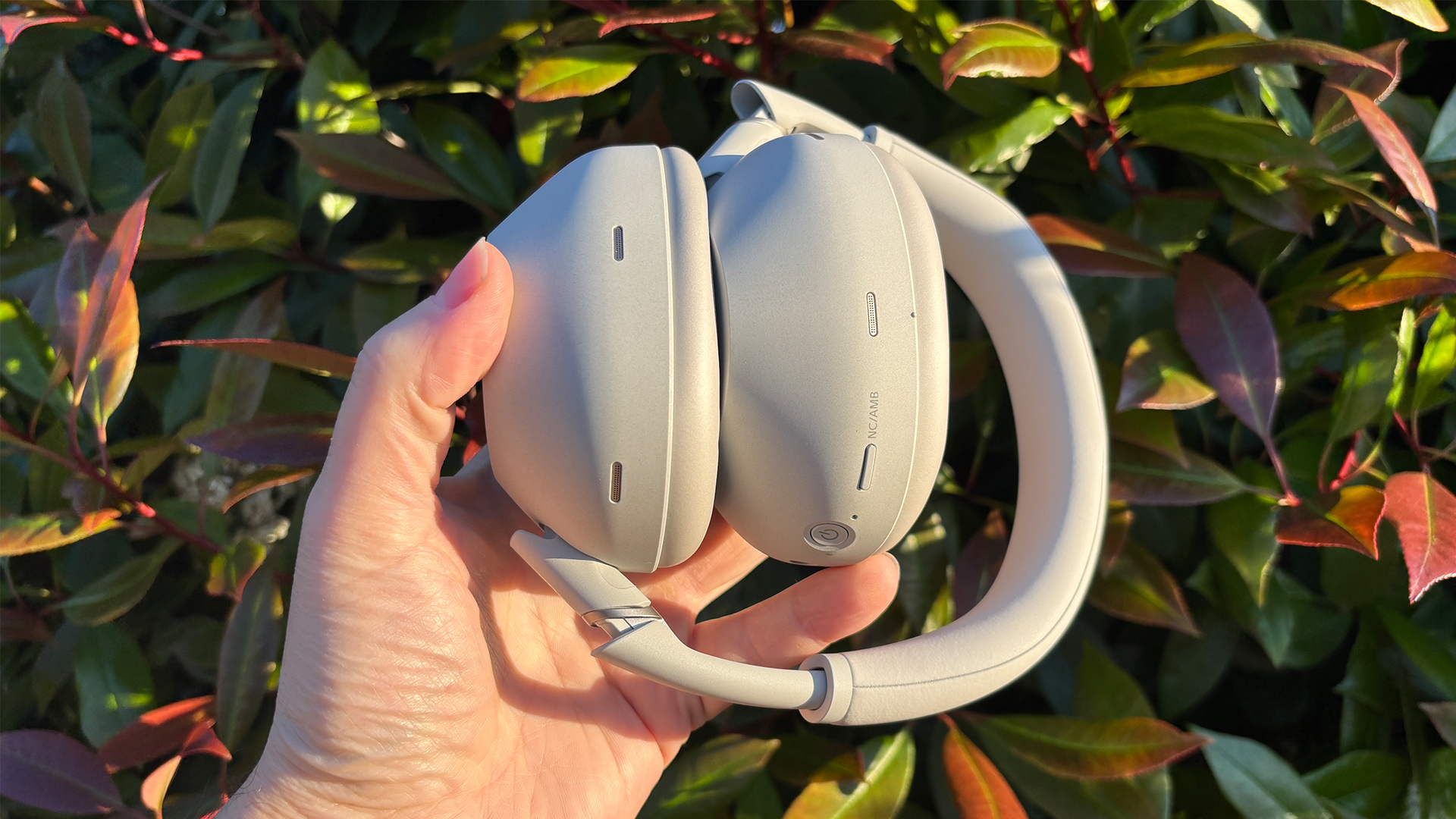
For Bowers & Wilkins, the design of its Px7 S3 over-ears feels like some sort of continuation from the likes of its Px7 S2e and the more premium Px8.
For the Sony WH-1000XM6, it's much more of a case of evolution, perhaps even revolution, as the Japanese audio behemoth looks to learn from the drawbacks of the Sony WH-1000XM5 (and there weren't exactly many), to satisfy as many customers as possible by taking its sixth-generation headphones to a whole new level.
One of the major flaws of the XM5 was that they didn't fold up; it's a limitation which has been rectified this time around to make the XM6 easier to carry and store. Some users also complained of fragility at the XM5's hinges, but Sony has used stainless steel at the end of each sliding arm on the newer model so that the new cans can be folded into a ball without snapping into pieces.
They get the job done as far as fit goes as well. The WH-1000XM6 sit more snugly than their predecessors, mainly because of an increased clamping force designed for greater isolation and to help the ANC work better.
Touch controls remain accessible on the surface of the right earcup, from which you'll be sliding, holding and tapping the exterior to get the desired effect. It's a well-implemented, responsive and smartly curated system.
The Px7 S3 are something a bit different. Put them side by side with the XM6, and most people would probably point to the B&W cans as being the more premium pair. In terms of perceived value, they are right up there as some of the most attractive cans around thanks to their textured woven headband fabric and subtle metallic embellishments adorning each earcup.
The Px7 S3 are lighter than their predecessors, though at 300g, they still weigh more than the 254g Sony XM6 cans. Still, they are comfortable and easy to accommodate, with only some of our test team experiencing on-ear heat issues caused by the earpads during longer wearing stints.
Where Sony employs touch controls, B&W has gone down a more traditional route, courtesy of a small array of physical buttons.
The backside of the right earcup offers a play/pause button flanked by longer volume controls; the left cup features a sliding Bluetooth/power toggle alongside a configurable ‘Quick Action’ button that we used to cycle through our test pair’s noise-cancelling modes during testing.
They work perfectly fine, although the small buttons can sometimes be tricky to use if you have clumsy fingers.
Foldability a dealbreaker? That's a big win for Sony – the Px7 S3 don't fold away at all. We envisage that the more portable WH-1000XM6 will be a touch easier to live with on a daily basis, even if they aren't quite as glamorous as their stylish counterparts.
**Winner: Sony WH-1000XM6**
Sony WH-1000XM6 vs Bowers & Wilkins Px7 S3: features
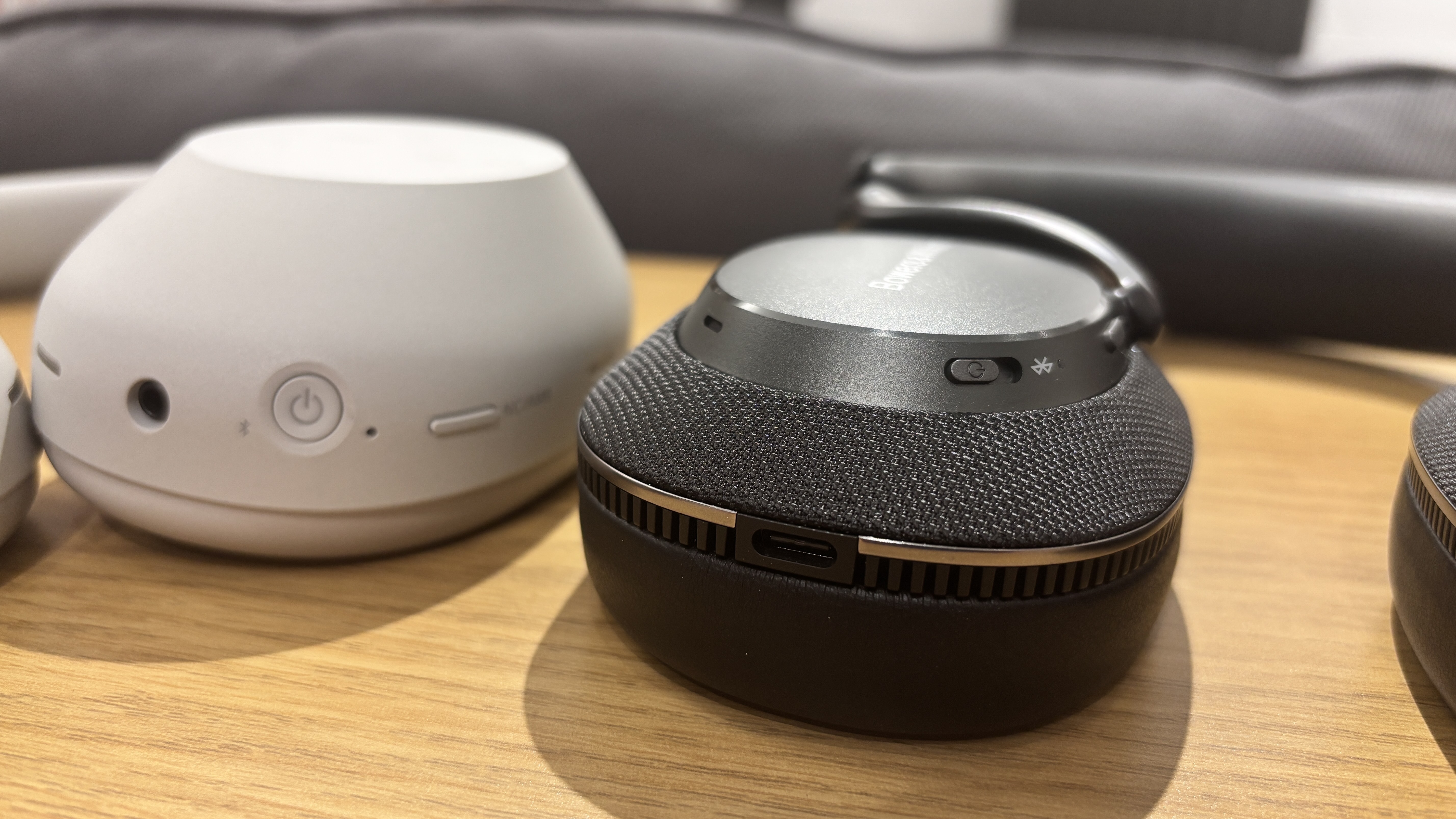
You are entitled to expect a very healthy stable of features for headphones operating in such premium waters, and thankfully, neither set here will let you down.
Battery life for the Px7 S3 clocks in at an eminently respectable 30 hours with ANC on – exactly the same numbers offered by the new WH-1000XM6. It's worth mentioning that these figures mean the XM6 haven't improved upon their predecessor's battery life.
Those remain healthy numbers, though, so it's not a disaster of Titanic-like proportions.
Bluetooth codec support is ample for both, with the Px7 S3 offering the standard AAC and SBC codecs alongside higher-quality flavours. aptX Adaptive and aptX Lossless are on the menu, and if you want to go all out on audio fidelity, USB-C and 3.5mm cable connections are provided in the box for wired listening up to 24-bit/96kHz quality.
For Sony, meanwhile, it's no surprise to see SBC, AAC and Sony's own LDAC for the XM6, but there's no sign of aptX or any of its variants on the menu. Not that we were really expecting it, mind. The Sonys don't offer wired listening, either, which offers a small win to the Px7 S3.
Both pairs of cans have moved with the times, with each set offering Auracast support, meaning that they can receive audio transmissions from compatible broadcast sources. Sony also has Bluetooth LE Audio support straight out of the box, but for the Bowers & Wilkins rivals, this and Auracast will be available as a future update.
Bluetooth Multipoint, which allows for easy listening and switching between multiple connected source devices on the fly, is available straight away for both.
The Bowers & Wilkins Music app is the place to be for customising your user experience with the Px7 S3, taking care of equaliser adjustments, checking your headphones’ key vitals or curating your streaming services.
For Sony, it's the Sony Headphones app, a reliable platform we have always found to offer clear and deep levels of customisation for the various sound and ANC features on board.
If you're willing to be patient, another over-the-air update for the Px7 S3 later this year will also see spatial audio incorporated into a pair of Bowers & Wilkins headphones for the first time. Sony fans don't have to wait, as 360 Reality Audio is on the menu straight out of the box. And it works as well as ever if you're into the immersive audio effect.
Both pairs offer wear detection, meaning they pause or play when they are removed from or restored to your head. The Sony also incorporate Speak to Chat, which recognises human speech and pauses playback accordingly; it's something the B&W cans don't offer.
Very strong showings for both pairs, but for offering all of its features upon release, the win goes to the WH-1000XM6.
**Winner: Sony WH-1000XM6**
Sony WH-1000XM6 vs Bowers & Wilkins Px7 S3: noise cancelling and call quality
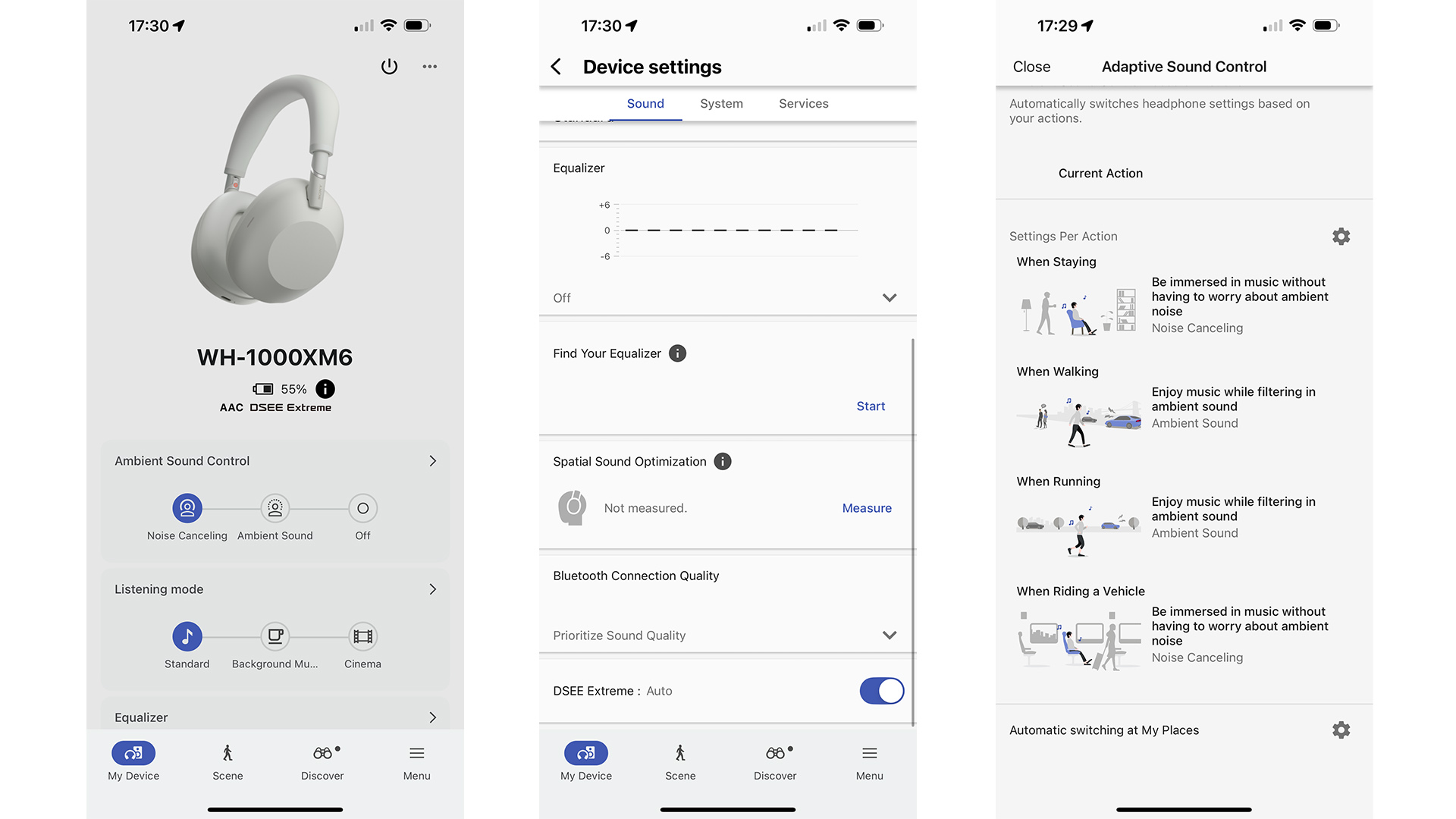
In a straight fight, the Sony WH-1000XM6 will easily beat the Bowers & Wilkins PX7 S3's noise-cancelling capabilities.
The PX7 S3 don't offer bad ANC, but we have found them to be behind the pack when it comes to competing with the likes of the established WH-1000XM5, the Bose QuietComfort Ultra Headphones or the Apple AirPods Max.
They get the basics done, but we feel they lag behind the competition in really isolating you from the outside world. Road and general low-frequency rumbles are reduced with decent skill, but they aren't so adept at muting traffic noise or the chatter of voices. At this level, we just don't expect to hear so many noises creeping in.
The WH-1000XM6, on the other hand, are far more capable at delivering noise cancelling abilities you might expect for this kind of money. As we say in our review: "The Sonys isolate you extremely well.
They present you with a nice clean, rumble-free background through which you can listen to music." It's a natural, sophisticated effect that gives you a clear background on which you can listen to your music.
There are more flavours available with Sony, too. You can select Ambient Sound for staying connected to your surroundings, as well as Auto Ambient Sound, which adjusts dynamically for loud sounds automatically. Then there's the standard noise-cancelling mode for blocking out the world with all of the might the Sony headphones can muster.
For Bowers & Wilkins, you get two modes: standard noise-cancelling and Transparency. While we don't consider the noise-cancelling mode to be class-leading, Transparency does exactly what it says on the tin by letting sounds in and keeping you aware of key information such as train announcements or people talking to you.
What about call quality? Here, the XM6 are similarly exceptional, using Sony's precise voice pickup technology and an array of microphones to cut down on background noise while focusing on human speech. Voices are clear and focused, making communicating through the XM6 a breeze no matter your environment.
While not quite in the same league, calls through the PX7 S3 are hardly a chore. Repositioned microphones and B&W’s ‘ADI Pure Voice’ voice processing technology tease “outstanding voice clarity”; while we wouldn't go that far, we find that human speech sounds natural through the B&W without seeming muffled or mechanical, whereas background noises rarely disrupt our conversations.
For their outstanding ANC capabilities, the XM6 are the clear winners here.
**Winner: Sony WH-1000XM6**
Sony WH-1000XM6 vs Bowers & Wilkins Px7 S3: sound quality
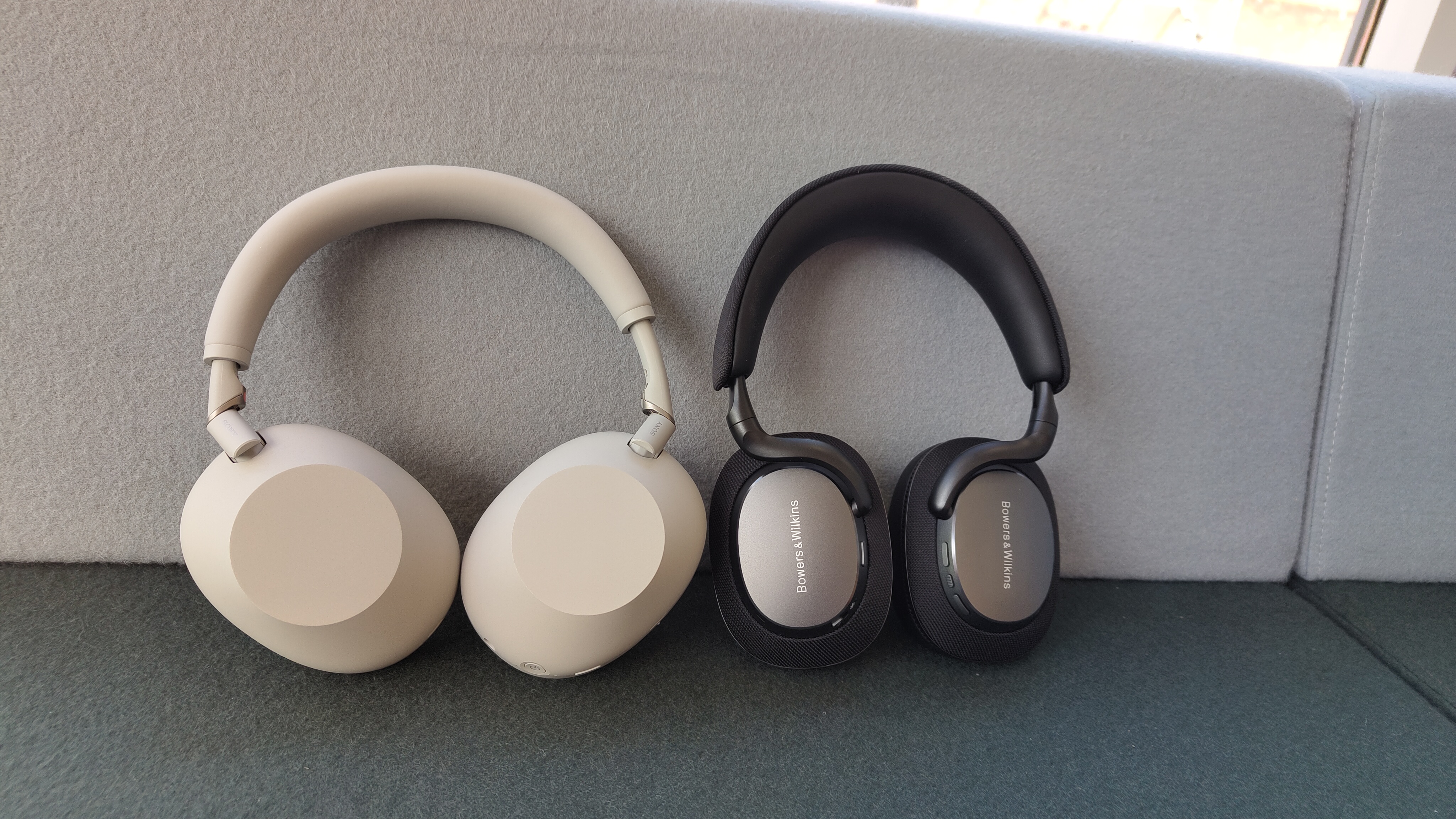
As you might have already guessed from the five star ratings, we like how both of these contenders sound. In fact, we like them both very, very much.
This may be a question of preference and how you like your cans flavoured, so let's start with the impressive credentials that could tempt you into making the Px7 S3 the number one contender on your shortlist.
To borrow from our review, the Px7 S3 are "exceptionally refined and detailed headphones, stunning us with their ability to outstrip their predecessors and even outperform the more expensive Dali IO-8 for textural insight."
The B&W over-ears delve deep into your music with their keenly analytical approach. Not content with giving you a broad approximation of your music, they are superb at pulling out instrumental timbres with "the relentless curiosity and enthusiasm of a bloodhound on the scent of a new lead".
There's real punch and power to the presentation, and while you'll hear headphones at this level that will step back from the music, the Px7 S3 are superb at dropping you into the heart of your collection. They are refined and detail-rich, yes, but there's an intimacy and closeness to their presentation which, to the right ears, is hugely rewarding.
How do the WH-1000XM6 stack up? They are, as you might have expected, absolutely fantastic, living up to the lofty expectation we had following the five-star legacy of the outgoing WH-1000XM4 and WH-1000XM5 models.
In fact, we state in our review that the XM6 "deliver the most detailed, dynamic, precise and open sound we’ve heard from a wireless Sony flagship," and that is really saying something. Whatever you play and whichever genres you prefer, they are just so happy diving into any track or genre and getting to the heart of the tune.
In terms of detail and analysis, they are just about on the Px7 S3's level, if possibly a shade behind – but they have a more potent sense of musicality, fluidness and friendliness that makes them such an easy, rewarding listen.
They are immense fun when needed, picking up on the emotions of tracks from Billie Eilish's No Time To Die to Eminem's Till I Collapse and just making them sound so dramatic and musically involving.
That is helped by the XM6's excellent handling of dynamic contrasts – a facet of musical performance where, we feel, they are ahead of their excellent B&W rivals – as well as an acute talent for teasing rhythmic patterns.
This isn't a cop out, but we do feel that your sonic preference here will dictate which pair of headphones you'll gel with and which will leave you feeling a touch colder.
In broad terms, if you crave detail, clarity and a deep sense of analysis, all with a healthy helping of punch and power, go with the Px7 S3.
If you love your music to be replete with emotion and feeling, with a tangible sense of dynamics, musicality and rhythmic propulsion, we'd steer you towards the effortlessly engaging and likeable Sony WH-1000XM6.
**Winner: Draw**
Sony WH-1000XM6 vs Bowers & Wilkins Px7 S3: verdict
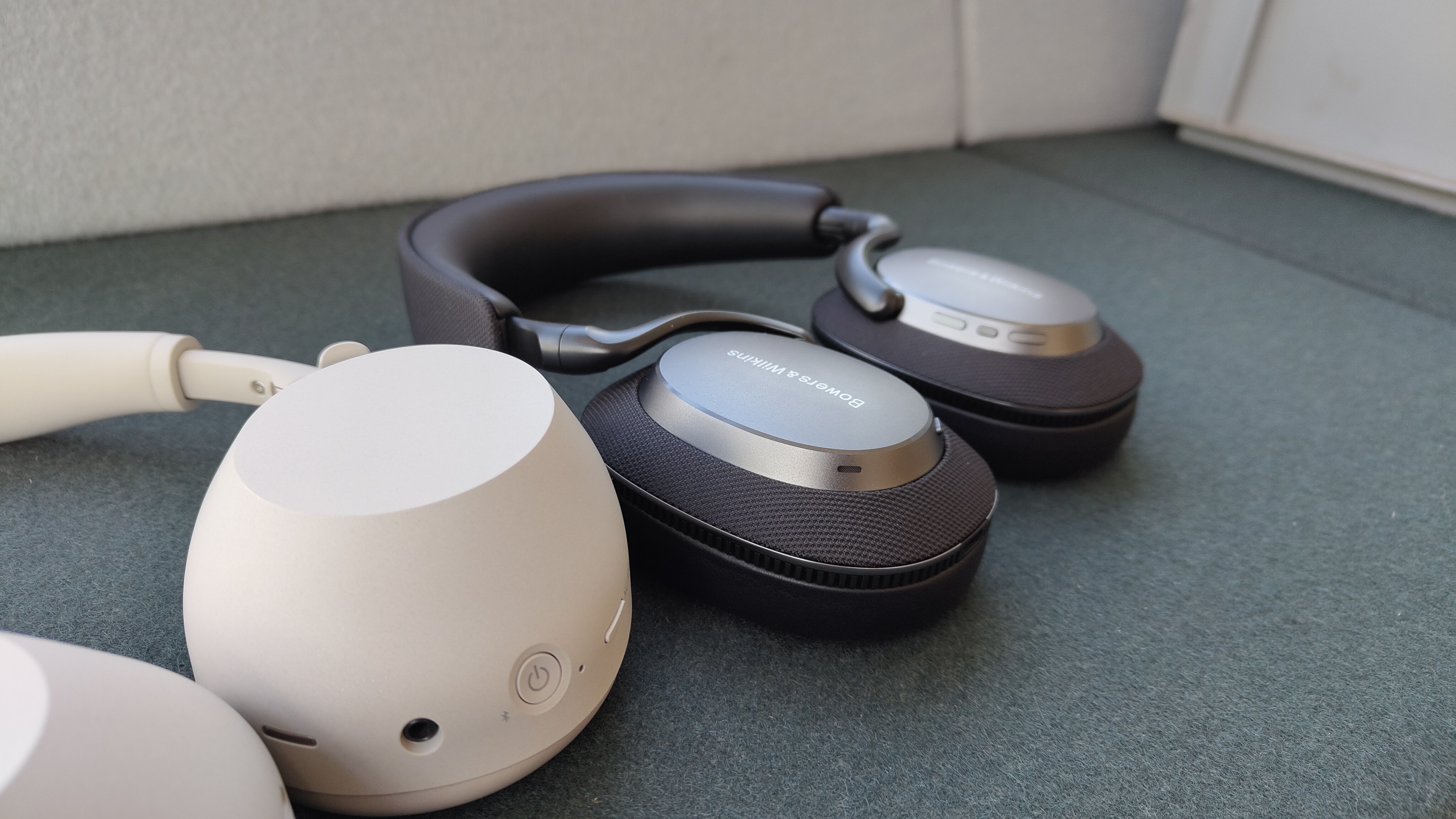
We have to reiterate just how good both of these pairs of wireless headphones are. Across sound, build quality, features and general appeal, they are unquestionably leading the charge for wire-free performance at what is still a reasonably accessible price bracket.
There are cases to be made for both pairs audio-wise, but so much of that will be down to personal preference that we urge you to think carefully about how you want your new headphones to sound. The Sony are more user-friendly, but we can completely see the appeal of the B&W's sense of style – if it's your sort of thing, of course.
In the end, it may be Sony's superior noise-cancelling that separates the two, as that's the one area in which we feel there's the greatest gulf in objective quality.
Either way, we have been bowled over by how good both pairs are across the board. It's always pleasing when we finish a versus and can conclude by stating that, whichever pair you pick, you won't be disappointed. These are both five-star candidates, after all.
MORE:
Sony WH-1000XM6 vs Bose QuietComfort Ultra Headphones: which are better?
Bowers & Wilkins Px7 S3 vs Apple AirPods Max: which premium headphones are top of the pops?
Our pick of the best noise-cancelling headphones around







